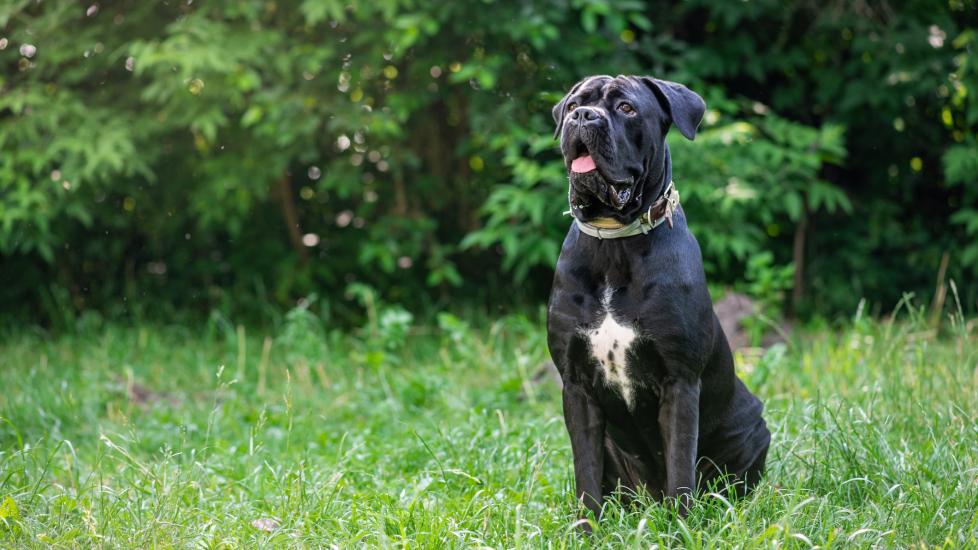Cane Corso
LanaSweet/iStock / Getty Images Plus via Getty Images
The Cane Corso, or Italian Mastiff, is a smart and affectionate breed known for their large stature and loyal nature. The Cane Corso size is impressive—these dogs can weigh over 100 pounds and can stand 28 inches tall at the shoulders. Cani Corsi (the proper plural of Cane Corso) have large heads, expressive faces, and a muscular appearance.
The Cane Corso is a working breed. Historically, Corsi served as watchdogs, farmhands, and even canine soldiers. The breed’s ancestry dates to ancient Greece and Rome, but Cane Corso dogs weren’t popular in the United States until the 1980s.
The name can be translated from the Latin as “bodyguard dog” or “guard dog of the courtyard.” But while these dogs have historically been guardians, today they can make loyal companions.
Caring for a Cane Corso
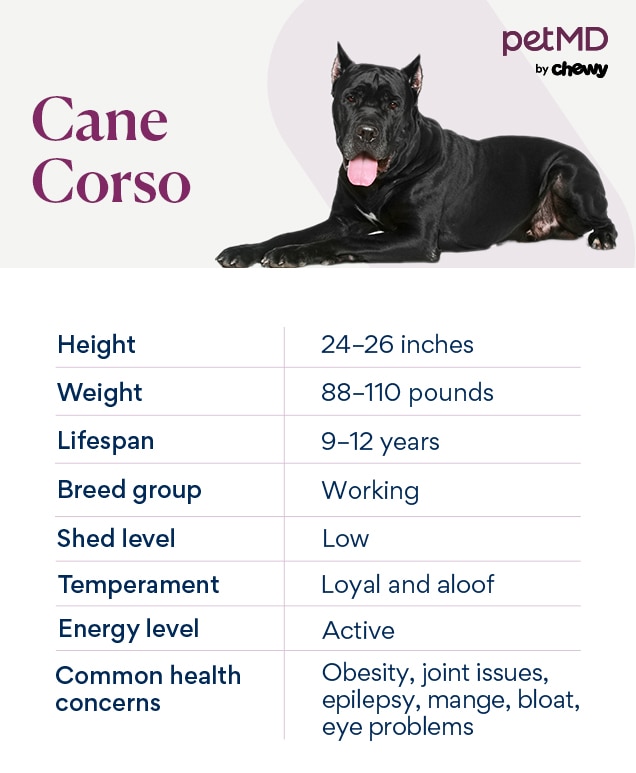
Cane Corso dogs are intelligent, eager to please, versatile, and intensely loyal to their humans, but they can also be willful, according to the Cane Corso Association of America (CCAA). As with other large guardian dogs, it’s important to provide early socialization with people and other animals. Like most large dogs, they require a good amount of exercise to keep up with their muscular shape.
The most common Cane Corso colors are black and black brindle, but they can also be chestnut brindle, fawn, gray, gray brindle, and red. They may also have a black or gray “mask” pattern on their face.
The coat is smooth and short, requiring minimal grooming. Cane Corso ear cropping is common, but it (along with tail docking) is mostly done for cosmetic reasons and the American Veterinary Medical Association opposes both procedures.
The Cane Corso lifespan is approximately 9–12 years, which is a little longer than average for a giant-breed dog. They can adapt to extreme temperatures but typically do better in warmer climates.
Cane Corso Health Issues
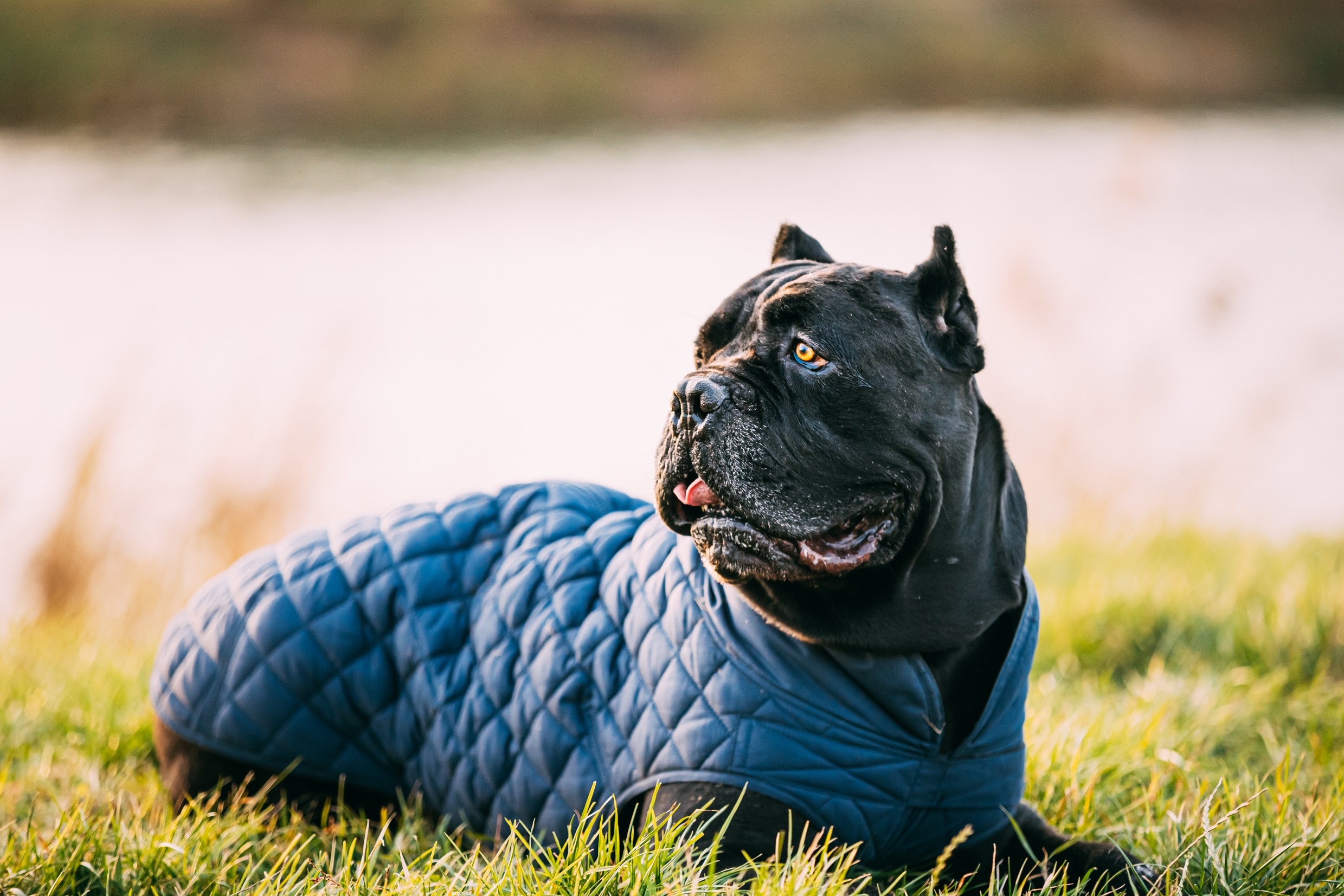
These dogs are generally healthy, as most Cane Corso breeders screen for common health conditions. However, potential pet parents should be aware of the following possible health issues and consider pet insurance for their puppy.
Obesity
Maintaining a lean body weight is ideal for all dogs, but especially for large or giant breeds because obesity can cause stress on the body and lead to other health issues. Your Italian Cane Corso will benefit from regular exercise and being on a well-balanced diet to avoid obesity. Always work with your veterinarian to determine the best nutrition plan for your dog’s life stage.
Hip and Elbow Dysplasia
Hip dysplasia is a degenerative joint disease that affects the back legs. Elbow dysplasia is a similar condition that affects the front legs. Bone and joint problems are a common cause of pain in large- and giant-breed dogs. Clinical signs include limping, decreased range of motion, and other signs of pain—especially later in life, as arthritis sets in.
Treatment for degenerative joint diseases can include:
-
Weight loss
-
Physical therapy
-
Joint protection supplements
-
Anti-inflammatory medications
-
Pain medications
-
Surgery
Testing, such as the PennHIP, can help predict your dog’s lifetime risk of hip dysplasia.
Idiopathic Epilepsy
Epilepsy is a seizure disorder, and “idiopathic” refers to a condition that arises spontaneously, when there is no known cause. These seizures usually develop in dogs around 3 years of age. While there is no cure, the seizures can be managed with medication. Dogs with idiopathic epilepsy can live long, productive, happy lives.
Demodectic Mange
Demodectic mange is a skin condition in dogs that can develop due to a genetic predisposition. Puppies have an immature immune system, which can leave them susceptible to demodex mites. Adult dogs with underlying health problems can also develop demodectic mange. The skin condition is not contagious to other dogs.
Clinical signs of demodectic mange include:
-
Hair loss
-
Scaly skin
-
Red bumps
-
Darkening and thickening of the skin
-
Varying degrees of itch
While common around the face and head in puppies, the lesions can develop anywhere on the body.
Not all cases of demodex require treatment; very small lesions can resolve on their own in one or two months. Larger skin lesions or those distributed all over the body can be treated with topical and/or oral medications. Affected dogs should not be bred.
Eyelid Abnormalities
Italian Cane Corso dogs are susceptible to a few different eye conditions.
-
Entropion is the most common eyelid abnormality in dogs. The eyelid rolls inward and the eyelashes rub on the cornea (the eye surface).
-
Ectropion usually affects the lower lids, causing a “droopy eye” look. The eyelids appear to fold away from the eye and may be inflamed.
-
Cherry eye occurs when the gland of the third eyelid is out of its proper position. The third eyelid is in the inner corner of the eye (close to the muzzle), and when the tear gland that is associated with it is out of position, it appears as a pink or red mass.
These conditions can cause chronic irritation and secondary bacterial infections and conjunctivitis. Surgery is the only way to correct these eyelid issues, and eye medications will likely be part of the recovery process.
Bloat and GDV (Gastric Dilatation-Volvulus)
Large, deep-chested dog breeds are susceptible to a life-threatening stomach condition called gastric dilatation-volvulus. It can occur suddenly when the stomach enlarges with gas (bloat) and then twists on itself (GDV).
Contact an emergency veterinarian immediately if you notice symptoms of bloat and GDV, including:
-
Your dog’s stomach enlarging quickly
-
Non-productive retching (trying to vomit but nothing comes up)
-
Signs of abdominal pain (whining with or without touching belly, stretching with front legs down/back legs up, reluctance to walk, not eating)
While bloat can sometimes be treated with aggressive medical intervention, a GDV requires emergency corrective surgery to save the dog’s life.
The best way to keep your Cane Corso from developing a life-threatening GDV is with a gastropexy procedure. This surgery is often done when Cane Corso puppies are being spayed or neutered. A gastropexy permanently attaches the stomach to the inside body wall—this fixation of the stomach keeps it from being able to twist upon itself.
What To Feed a Cane Corso
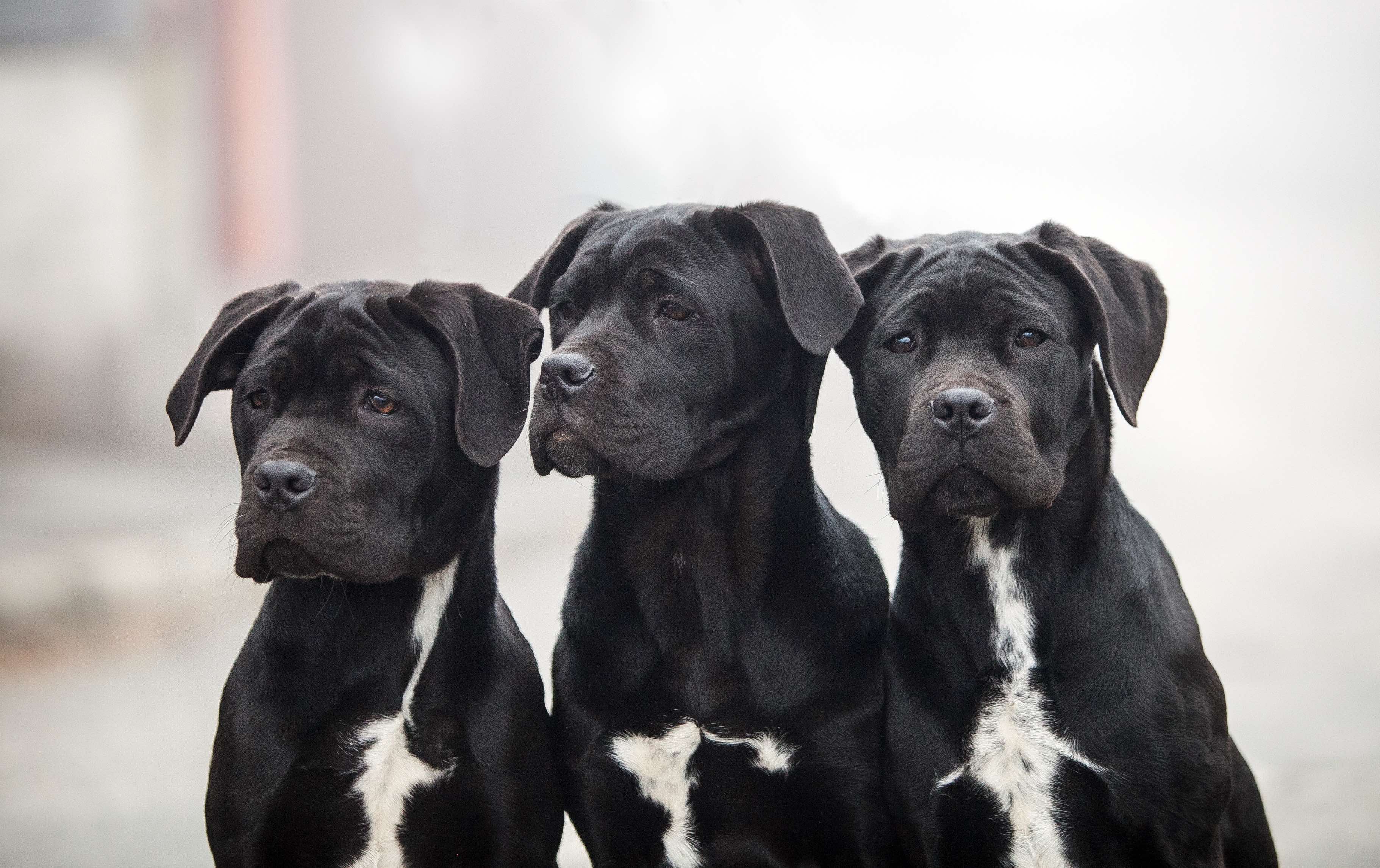
The Cane Corso is considered an all-purpose working dog. Corsi require a high-quality, age-appropriate diet to meet their nutritional needs. These diets are usually labeled puppy, adult, or senior.
It's highly recommended that all dogs eat a diet approved by the Association of American Feed Control Officials (AAFCO), which ensures that the formulation meets or exceeds established standards.
How To Feed a Cane Corso
Because Cane Corso dogs are susceptible to bloat and GDV, pet parents need to take some precautions when feeding their dog. For one, always feed an Italian Cane Corso smaller meals throughout the day (instead of one big meal). You should also avoid using elevated food bowls and prevent your dog from exercising just before or after eating.
How Much Should You Feed a Cane Corso?
In general, Cane Corso puppies should be fed three to four times per day on a regular schedule, and adult dogs should be fed at least twice a day. How much you feed is determined by the specific food’s caloric density and your dog’s energy requirements. Asking your veterinarian for portion sizes is best.
Nutritional Tips for Cane Corso Dogs
Dogs that are on a well-balanced, AAFCO-approved diet do not need additional vitamin and mineral supplements to maintain a healthy lifestyle. However, some supplements may be helpful for joint health, digestive health, and providing a well-rounded health plan.
-
Joint supplements: Glucosamine, chondroitin, and MSM supplements (such as Dasuquin with MSM) are great for promoting joint health. MSM has all-natural anti-inflammatory properties. Omega-3 fatty acids (high-quality fish oil) are thought to have anti-inflammatory properties as well when given at appropriate doses. Research shows that reducing inflammation helps to control pain associated with osteoarthritis, which is a common problem in dogs with joint issues.
-
Probiotics: Probiotics for dogs are great for promoting gut health. Some come with other benefits, such as Calming Care, which helps ease anxiety, and Zesty Paws, which contains pumpkin, adding fiber to the diet.
Behavior and Training Tips for a Cane Corso
Cane Corso Personality and Temperament
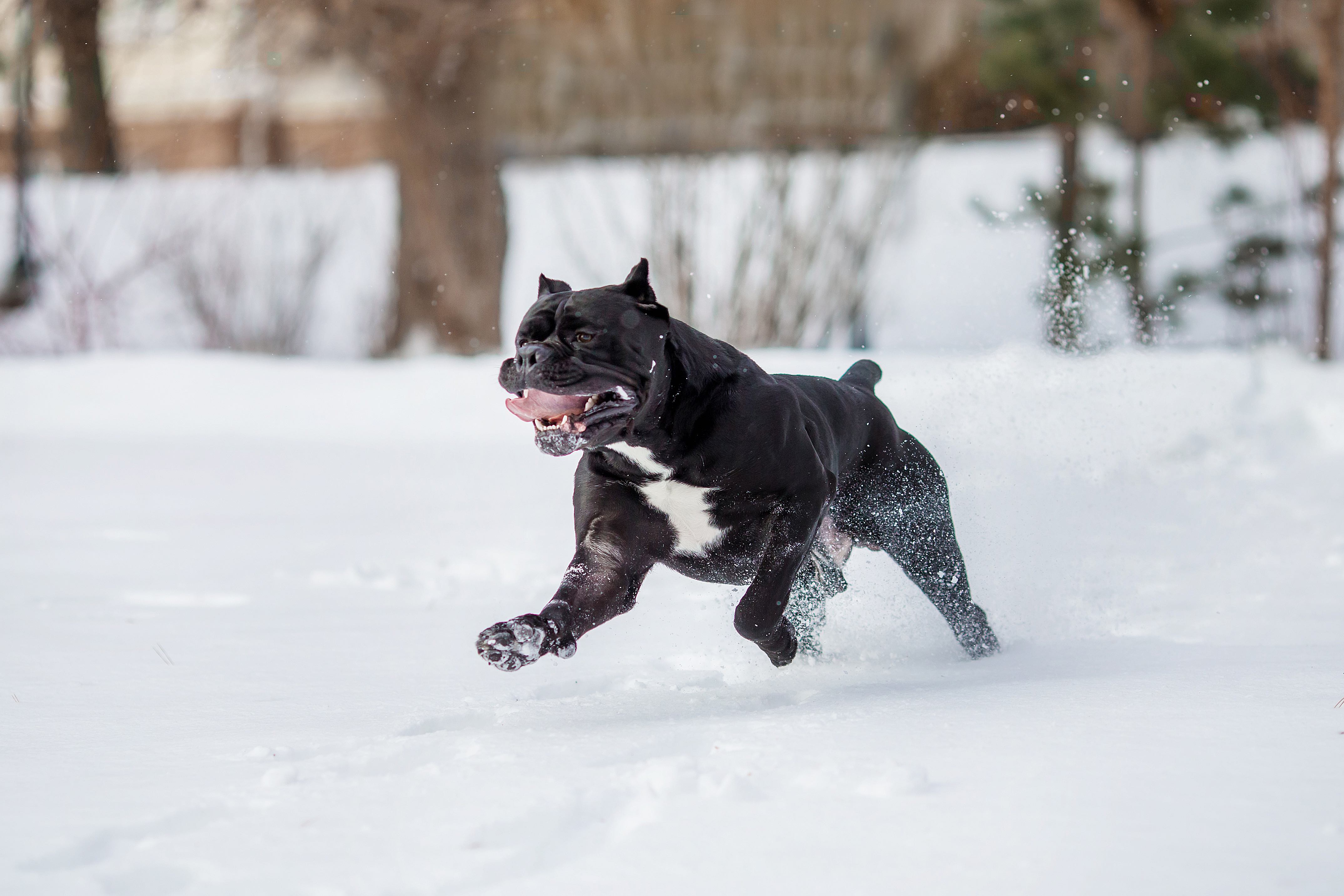
Cane Corso Personality and Temperament
The Cane Corso temperament is loyal and unwavering. These dogs are great companions and enjoy having a family with children to watch over. However, their instinct to take charge can be an issue for pet parents who haven’t invested in training their Corso dog.
These dogs must be socialized and trained with positive reinforcement starting at a very young age to be accepting of new people, animals, and situations. Training can start as soon as your new Cane Corso puppy comes home. This breed might be best suited to a family with older children due to their larger size.
The Cane Corso is reserved, confident, and extremely attentive to their surroundings. They tend to be quiet dogs.
Cane Corso Behavior
With a deep ancestry as working dogs, Cane Corso dogs can be sensitive and serious. Their behavior largely depends on the care and training they receive when they are young. They can be gentle and affectionate in the right hands, but if the pet parent is inexperienced or unkind, the Cane Corso can become reactive.
Make sure to supervise your Cane Corso during interactions with children or other pets, and always teach children how to properly interact with dogs. Corsi like to have their family close by, ideally in the same room. Consider placing dog beds in the rooms where you spend the most time.
While Cane Corso dogs have historically been guardians, today they can make loyal companions.
Cane Corso Training
This intelligent working breed thrives on activity and having a job to do. Like most large dogs, the Cane Corso benefits from a fenced-in yard and frequent walks or runs.
These dogs enjoy agility training, skills training, dock diving, and other activities that keep their mind enriched and their body fit. If they are not exercised and stimulated often, they may get themselves into trouble with bad behaviors such as digging, pawing, and jumping.
The Cane Corso is not as toy-oriented as many other breeds, and most are not interested in retrieving.
Fun Activities for a Cane Corso
-
Nose work
-
Obstacle or agility courses
-
Sled-pulling
-
Dock diving
Cane Corso Grooming Guide
The Cane Corso has a smooth, short, double-layered coat that does not require much maintenance. However, Corsi do shed throughout the year, especially during the spring.
Skin Care
The Cane Corso is a low-maintenance breed when it comes to skin care. Corsi only need to be bathed a few times a year, usually during the spring’s high shedding periods, or when they get dirty. Bathing your dog too frequently strips the coat of the natural oils that protect the skin.
Coat Care
Weekly brushing—daily during shedding season—with a medium-bristle brush, a rubber grooming mitt or tool, or a hound glove will remove dead hair before it can fall onto the furniture. Brushing also helps remove dirt and promotes new hair growth.
Eye Care
Eyes should be clear, with no redness or discharge. Ensure that the eyelids and eyelashes are not rubbing on the eye or drooping outward, which would indicate a need for surgical correction. Using a mild eye-cleaning wipe can help prevent tear staining.
Ear Care
Check ears weekly for redness or a bad odor, which can indicate an ear infection. Regularly cleaning a dog’s ears if the dog is not having any issues can be more harmful than helpful. Adding excessive moisture to a dog’s ear with frequent bathing, swimming, or overuse of ear-cleansing liquid may promote bacterial growth in the ears, causing an ear infection.
Nail Care
Their nails should be trimmed regularly, as excessively long nails can be painful and cause problems with walking and running. If you here your Cane Corso’s nails clacking when they walk, it’s time to trim them.
Dental Care
Like all dogs, Cane Corso’s could benefit from toothbrushing two to three times per week to help decrease plaque build-up and tartar formation. They may also like dental chews.
Considerations for Pet Parents
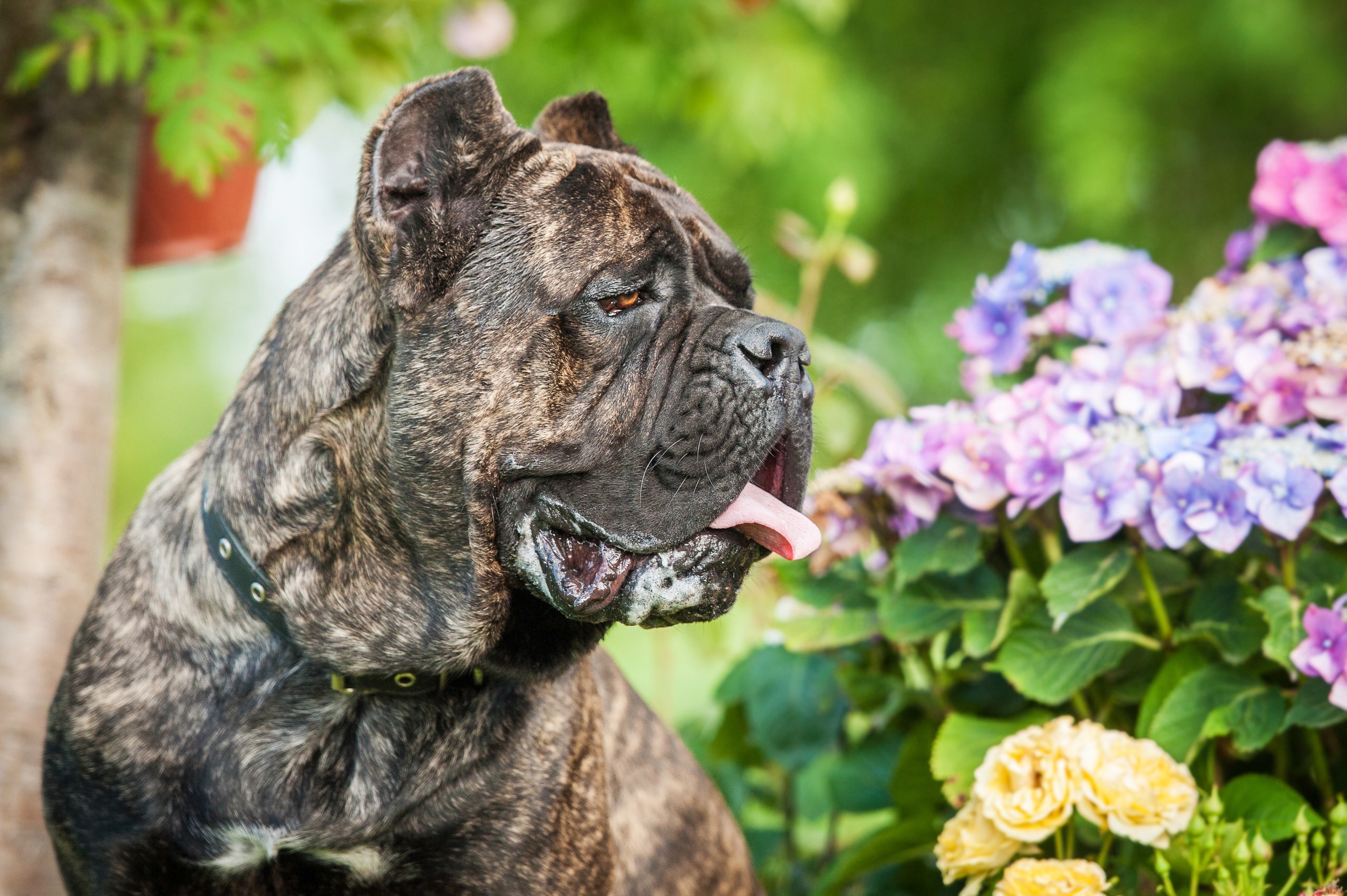
Before bringing a Cane Corso puppy into your home and family, consider whether you can put the time and effort into training, socializing, and exercising your new pet. Because these are large dogs, having a big space (ideally with a large yard) would be best. A tall, sturdy fence in the backyard is recommended—not an invisible fence. A Cane Corso is not a good dog breed for those who live in apartments.
Cane Corso FAQs
Is a Cane Corso a good family dog?
With proper socialization, Cani Corsi can be good family dogs, as they are bred to be loyal and loving. The Cane Corso is best suited to a family with older children, due to the breed’s large size. Make sure to supervise your Cane Corso dog during any interactions with children or other pets, and teach children how to properly interact with dogs.
Are Cani Corsi smart dogs?
The Cane Corso is extremely intelligent and needs consistent lifelong training from a pet parent who will be clear about expectations.
How much does a Cane Corso cost?
The average cost of purchasing a quality Cane Corso puppy from a reputable breeder is about $1,500–$2,500. However, for a Cane Corso puppy with top breed lines and a superior pedigree, the cost may be $3,000–$5,500. You can also find Cane Cori at rescues and shelters.
Is the Cane Corso a Pit Bull?
The Cane Corso and Pit Bull are not the same. The Cane Corso is a specific breed of dog, whereas the term "Pit Bull" often refers to an umbrella of bully breeds, including the American Staffordshire Terrier, American Bulldog, and Staffordshire Bull Terrier.
What is the origin of the Cane Corso breed?
Italy is the birthplace of two mastiff-type breeds, the Neapolitan Mastiff and the Cane Corso. These are both descendants of an ancient Roman war dog, the canis pugnaces.
What is the plural of Cane Corso?
The correct plural form of Cane Corso is not Cane Corsos—rather, it's Cani Corsi.
